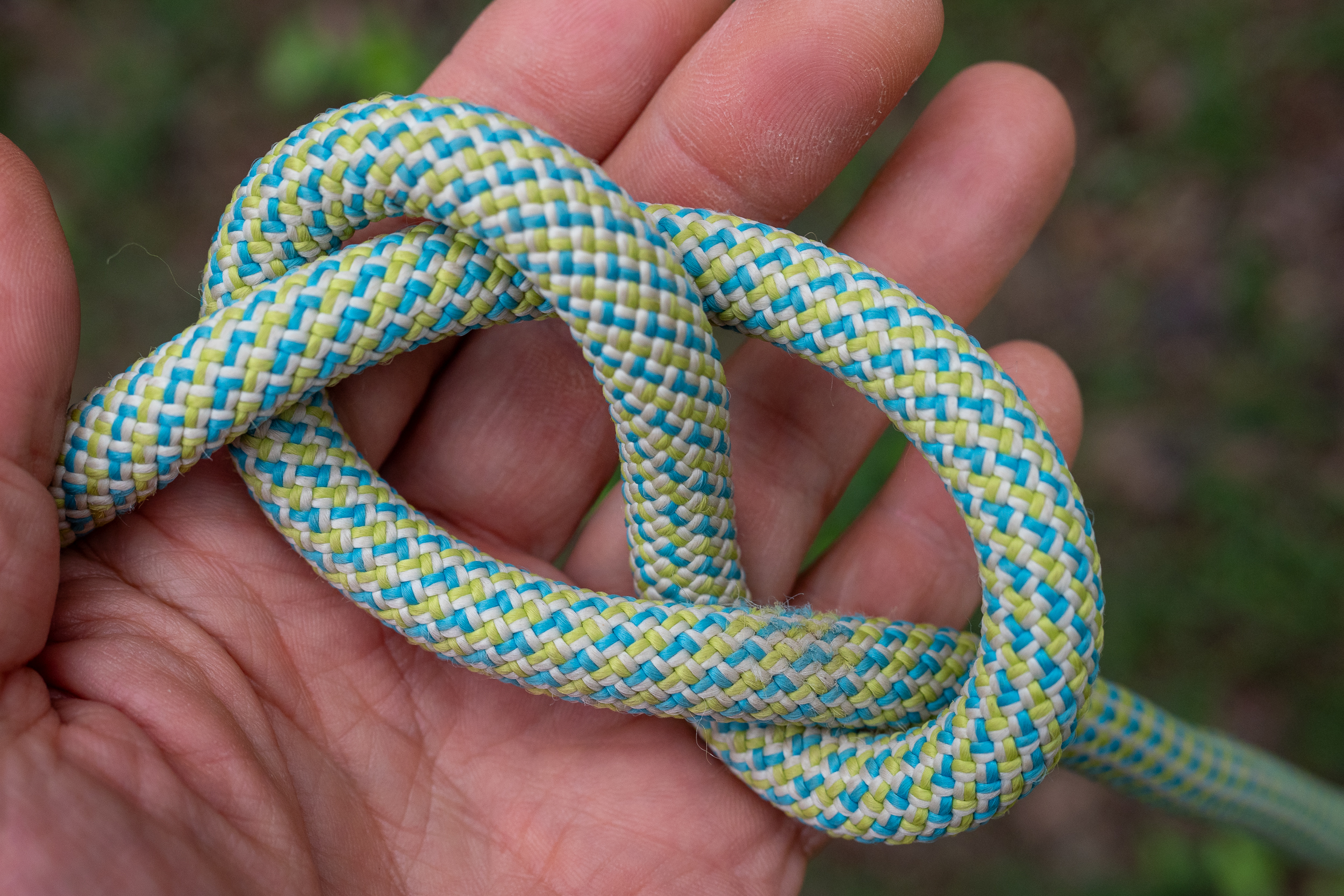The Edelrid Neo 3R 9.8 is the first dynamic climbing rope to use 50% reused ropes. The rope is UIAA- and EN-certified and is visually identical to one made of 100% new materials.
I’m all about improving the sustainability of all outdoor pursuits. But regardless of the UIAA ratings solidly proving the safety of the Edelrid Neo 3R 9.8, my brain still wanted visceral proof that the “half recycled” rope would perform just as well as others.
I tested the Edelrid Neo 3R 9.8 for over a year of local and destination rock climbing. It did duty as a local hang-dogging work rope and on long pitches on established granite and limestone areas of the south. The cord got dusty under polished sport routes and dragged across sharp crystals and water pockets on more adventuresome lines. It took countless leader falls and ran endless laps as a top rope for beginners. The Neo 3R 9.8 was a true workhorse.
In short: The Edelrid Neo 3R 9.8 was an excellent all-around rock climbing rope regardless of its sustainability score. It handled and knotted well, delivered soft catches, and held up to wear and tear like other high-quality ropes. The 50% recycled status was a welcome bonus.
How Edelrid Makes the Neo 3R 9.8
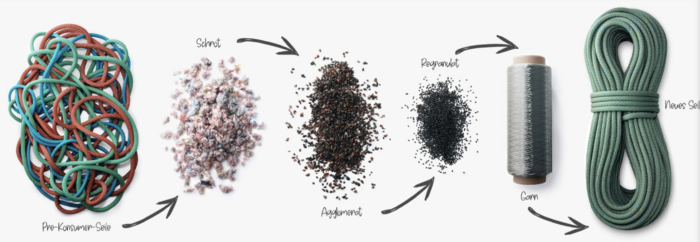
Although Edelrid had made products from recycled ropes before, manufacturing a dynamic climbing rope was a new challenge requiring the brand to invent and execute new processes. The rope-making starts with discarded, pre-consumer ropes.
These ropes are mixed to make “grist,” and then melted and processed to form agglomerate chunks, then ground down to granulate. This list of steps reads as if it is easy. But it’s far from it to get granulate that can be extruded and spun into yarns with the correct properties for dynamic climbing ropes. The standard machines that produce yarns for the sheath and core of the Neo 3R had to be modified for the upcycled materials.
Using discarded ropes is a benchmark in climbing rope manufacturing. But earlier, Edelrid led the way in sustainable ropes by becoming the first to offer Bluesign-certified ropes.
Edelrid Neo 3R 9.8 Technical Specifications
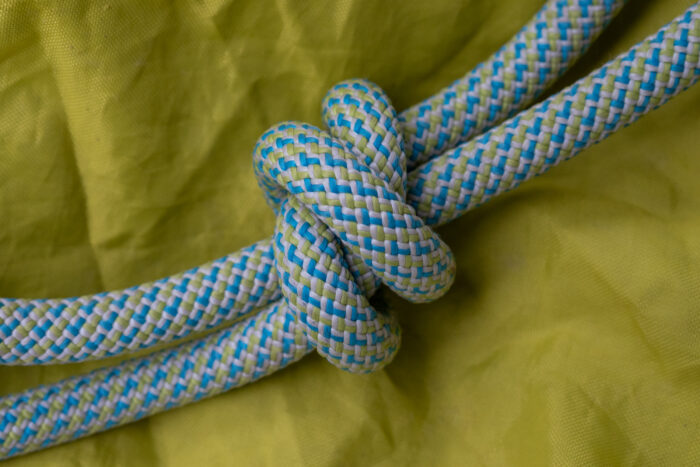
- UIAA-certified, five falls
- EN 892 certified
- Core proportion: 62%
- Impact force: 8.6 kN
- Weight: 61 g/m
- Static elongation: 8.3%
- Dynamic elongation: 37%
Edelrid offers the Neo 3R 9.8 in a 70m length only and marks the middle.
Edelrid Neo 3R 9.8 Review
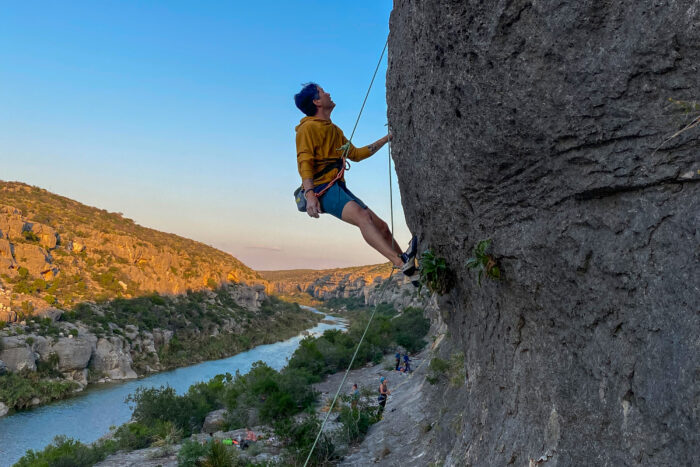
The rope was a little stiff at first, making big loops when I flaked it out. But within the first day, the rope became more pliable on the end we were climbing. It then knotted and handled well through Eledrid’s Mega Jul, a Petzl GriGri, and other tube-style belay devices used during the test period.
The elongation properties worked well for sport climbing situations. The static elongation felt correct during lead hang-dogging sessions, making pulling up to the bolt and maintaining the correct position feel normal. Top roping work sessions also felt normal. There was an acceptable amount of elongation when the climber took a break on the route.
Lead and toprope falls also felt normal to both climber and belayer for a dynamic rope with a sub-10mm diameter.
Edelrid doesn’t offer a dry treatment on this cord. Some non-dry-treated ropes have latched on to the fine talcum powder dust at the bottom of a local and heavily traveled limestone cliff much more than treated versions. The combination of sweat, oils from hands, and this dust has quickly stained many non-dry-treated cords. But the Edelrid Neo 3R 9.8 fared well.
I dragged the rope across slabby limestone with extremely sharp water pockets for three days of lead and top rope climbing. This cliff has rendered some new climbing ropes moderately fuzzy in that time. The Edelrid Neo 3R 9.8 sheath suffered minimal damage despite frequent top rope use. Over the year-long testing period, the cord caught hundreds of short leader falls and a handful of lengthy whippers without developing soft spots.
All of this is to say the Edelrid Neo 3R 9.8 felt, handled and performed as a sub-10mm, high-end dynamic rope should. The 50% recycled material was a bonus. I considered the rope a victory in making climbing more sustainable. There were zero perceptible downsides, short of the unavailability of a dry treatment for keeping half a rope’s material out of the landfills.
Edelrid Neo 3R 9.8 Review: Final Thoughts
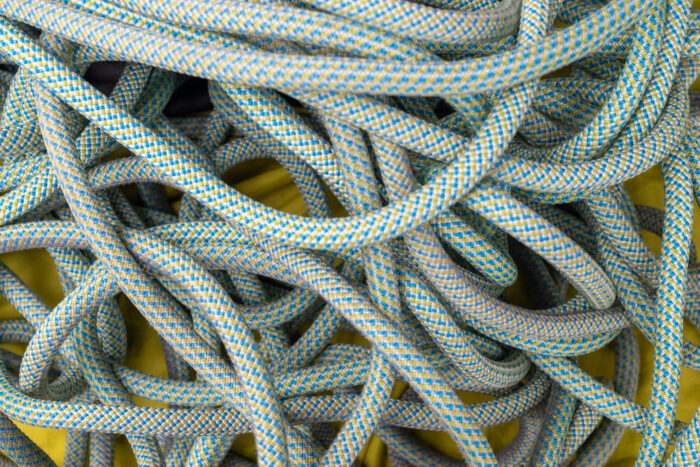
High-end climbing ropes from established manufacturers all do their jobs remarkably well. Choosing between these ropes of similar diameter is splitting hairs, very fine hairs.
The Edelrid Neo 3R 9.8 possessed all the attributes and performance characteristics I expect from a dynamic rope produced by one of the most established climbing brands. There are no surprises there.
What sets the Neo 3R 9.8 apart is the 50% recycled content. No, it’s not fully recycled, but 50% is a significant step toward more sustainable climbing with no downsides. Bravo, Edelrid.
